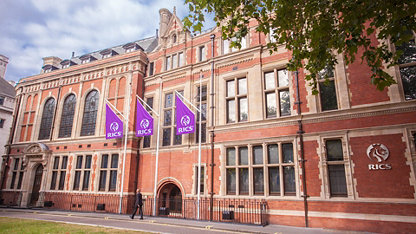While many countries are now emerging out of lockdowns, the experiences of living under them will be sowing seeds of thought for how we use city spaces in future. When the place in which you live becomes your workplace, your school, your leisure space, your exercise space and your sanctuary, the word ‘home’ takes on a new meaning that could challenge both appetite for living in city centres and approaches to the way these residential spaces are designed.
For some, the close proximity of neighbours will be stifling and during lockdowns, city centre living will have never seemed so unappealing. Cooped up inside with little outdoor space and making desperate attempts to stay distanced from others when venture out. For these city centre dwellers, rural, small town, or countryside living may now feel idyllic.
But for others city centre living will bring comfort. It is undeniable that where lockdown measures have been implemented our cities have changed. But while the attractions that draw us to city life are not accessible in many countries, the charm of city centres, with the many restaurants, galleries and coffee shops, remains.
But our cities are constantly evolving, be it pop-up shops, co-living and shared office space, all relatively new and all part of changing cityscapes rubbing shoulders with the more traditional ways of living and working. The adaptability of city living is one of its great attractions, but how might the COVID-19 crisis change our city centres?
Reassessing the private rented sector
City living is expensive and has left many priced out of both the sales and rental markets. However, with COVID-19 bringing an abrupt end to tourism and the sale of homes stalled, agents are reporting that properties that had been used for short-term holiday lets are now coming back onto the rental market. As a result, we are hearing that rents are starting to fall across a wide range of cities such as Dublin, Edinburgh, London and in cities across America, with private renters seeing areas that were once unaffordable becoming more attainable.
Bringing longer-term rents to short-let properties will change the dynamics of some areas, creating new communities and new opportunities for retail and leisure once the lockdown has been lifted.
If you are someone regularly commuting into your city centre and you have spent recent weeks with a short room-to-room ‘commute’, the prospect of city centre living and being able to walk or cycle to work may have become more desirable.
Reassessing living space
COVID-19 gives us an opportunity to rethink both inside and outside our front doors, and how we view our living space. Living in a city centre is about embracing the opportunities that a city has to offer. That living is as much in the parks, restaurants, bars, theatres and coffee shops that we frequent as it is in our homes; it is in all the places where we create memories.
We may also now rethink our city centre typology, whether this in the homes that we build, such as developing apartment blocks with useable balconies, or creating more flexible interiors or communal spaces to accommodate home working. There may also be new considerations to how we plan our space, developing smaller, less dense neighbourhoods with more urban greening and local pocket parks, or closing streets to traffic and creating wider pavements.
COVID-19 may instigate a rethink of the homes and locations in which we live and want to live, along with the price that we are willing to pay. At RICS we have been monitoring and discussing the short and longer-term impacts of the pandemic and I shared some thoughts on the European residential market alongside other panellists at a recent webinar for the RICS World Built Environment Forum.
“COVID-19 may instigate a rethink of the homes and locations in which we live and want to live, along with the price that we are willing to pay. ”
Reassessing workspace
While we reassess how we live in our cities, we are also reassessing our approach to where and how we work. It is unlikely that we will return to our offices in the same way, changing our relationship with not only our workplace but also our homes.
Social distancing measures that have been in place throughout the world mean that employers are now reconfiguring office space, creating one way systems, bringing back walls and partitions that had been removed to facilitate open plan working, and investing in new technologies to keep staff connected whilst keeping them apart, but how keen are people to return to the office?
Major cities such as New York, Paris and London are heavily dependent on public transportation to get people into work. With widespread restrictions and anxiety around the use of public transport likely to be prevalent for some time, is this likely to encourage more people to want to live within a cycle ride or walk or their workplace?
Alternatively, will an increased use of flexible working see a contraction in office space in central locations drawing people out of what are no longer convenient city centre spaces into more affordable and larger homes further away?
City centre living, especially in the major global cities, has long been an exiting dream for many. However, it faces challenges in the post COVID-19 world. With our homes becoming our workplaces, a desire for more private space inside and out, and social distancing changing how we enjoy our leisure time, our cities centres will once more have to evolve if they are to attract new generations of dreamers.
AUTHOR
Mairead Carroll, Associate Director Residential Standards, RICS














